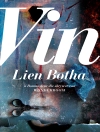Rudolf Arnheim’s great forte is his ability to illuminate the perceptual processes that go into the making and reception of artworks—painting, sculpture, architecture, and film. Over the years, his pioneering mode of ’reading’ art from a unique scientific/philosophic perspective has garnered him an established and devoted audience. That audience will take pleasure in Arnheim’s most recent collection of essays, one that covers a range of topics and includes titles such as ’Outer Space and Inner Space, ’ ’What Is an Aesthetic Fact?, ’ ’As I Saw Children’s Art, ’ ’Two Ways of Being Human, ’ ’Consciousness—an Island of Images, ’ and ’From Chaos to Wholeness.’
The notion of structure is Arnheim’s guide in these explorations. Most of the essays examine the nature of structure affirmatively: how it comes about, its incentives and objectives, its celebration of perfection. He is interested in how artists grope for structure to shape powerful, enlightening images, and how a scientist’s search for truth is a search for structure.
Writing with enviable clarity, even when deploying complex arguments, Arnheim makes it easy and exciting to follow him as he thinks. America is not abundantly supplied with ’public intellectuals’ such as Rudolf Arnheim—to have his writings with us is cause for celebration.
’The word ’structure’ appears for good reason in the title of this collection. . . . Structure seems to be needed as an arbiter wherever this civilization of ours is split by selfish interests and fighting for either/or decisions. The essays want to speak with the voice of reason, because they want to show how the parts require the whole.’
Rudolf Arnheim’s great forte is his ability to illuminate the perceptual processes that go into the making and reception of artworks—painting, sculpture, architecture, and film. Over the years, his pioneering mode of ’reading’ art from a unique scientific
Innehållsförteckning
Foreword
I
The Split and the Structure
Learning by What Is Around
Two Sources of Cognition
The Two Authenticities of the Photographic Media
II
The Way of the Crafts
Outer Space and Inner Space
Inside and Outside in Architecture
Drawings in Design
Notes on Religious Architecture
III
What Is an Aesthetic Fact?
From Pleasure to Contemplation
The Symbolism of Light
A God’s Perfection
Gauguin’s Homage to Honesty
The Echo of the Mountain
Deus ex Machina
A Maverick in Art History
IV
Learning by Looking and Thinking
As I Saw Children’s Art
Artistry in Retardation
A System of Expressive Movement
V
The Face and the Mind behind It
Consciousness-an Island of Images
Form as Creation
From Chaos to Wholeness
VI
Two Ways of Being Human
Lemonade and the Perceiving Mind
The Dynamics of Problem Solving
Acknowledgments
Index
Om författaren
Rudolf Arnheim is Professor Emeritus of the Psychology of Art at Harvard University. For many years he was a member of the Psychology Faculty at Sarah Lawrence College, and he spent his last ten academic years at the University of Michigan in Ann Arbor, where he now lives.












